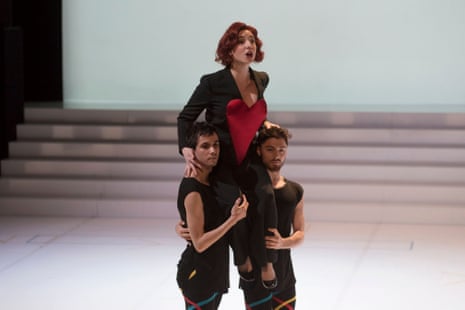The distinctively French form of opéra-ballet brings two genres together to make a third. For baroque composers such as Rameau, the term meant something lighter and more purely entertaining than the grander tragédie-lyrique. A hit in Paris in 1739, Hebe’s Festivities is entirely characteristic.
Hebe was the goddess of youth. In the work’s prologue, she decides to quit Olympus for the banks of the Seine, to enjoy spectacles celebrating poetry, music and dance, each occupying an act (or entree). None of them has much of a plot, but that’s not really the point: Rameau and his co-creators intended to charm and delight, and in this collaborative venture between students from the Royal College of Music, the Académie de l’Opéra national de Paris and the Centre de musique baroque de Versailles, the work’s first UK staging goes a long way towards succeeding.

There are limitations. One can assume that the original Paris Opéra staging would have had a budget that director/set designer/choreographer Thomas Lebrun could only dream of, but his sets and Laurianne Scimemi Del Francia’s colour-co-ordinated costumes nevertheless manage some clean-edged chic. Dance is crucial, and Lebrun’s modern approach is rarely intrusive, though the choral hand gestures are not a good idea.
But a lot of the solo singing manages the fine balance between getting the text over while observing the finicky decorations of Rameau’s vocal lines. The chorus is terrific and the orchestra characterful, though conductor Jonathan Williams could keep a tighter rein on the ensemble.

Comments (…)
Sign in or create your Guardian account to join the discussion